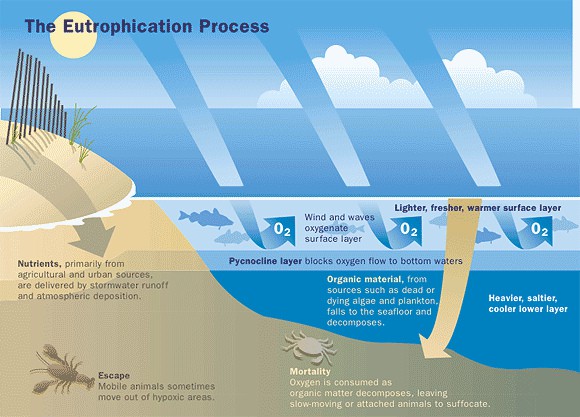Energy Pyramid: Definition, Levels and Examples

Energy Pyramid is sometimes referred to as an ecological pyramid or trophic pyramid. It is a graphical representation between various organisms in an ecosystem. The pyramid is composed of several bars. Each bar has a different trophic level to represent.
The order of these bars is based on who feeds on whom. It represents the energy flow in the ecosystem. Energy flows from the bottom of the pyramid, where we have producers, upwards. The height of the bars is normally the same. However, each bar has a different width depending on the quantity of the element being measured.
An energy pyramid is useful in quantifying the transfer of energy from one organism to another along a food chain. Energy is higher at the bottom of the pyramid, but it decreases as you move up through the trophic levels.
Namely, as energy flows through the various trophic levels, some energy is normally dissipated as heat at each level. About 10% of the total energy is transferred during energy flow through several trophic levels and hence the steady drop in the amount of energy.
But why the pyramid shape?
The shape is significant in demonstrating the flow of energy due to the way the energy is utilized and lost throughout the ecosystem.
There are different levels on the energy pyramid. Let’s have a look at them.
Four Main Levels of Energy Pyramid
1. Producers
The producers and the energy available within them occupy the first level of the energy pyramid. These producers are largely the autotrophs – organisms that manufacture their own food by harnessing energy from non-living sources of energy. Often times, these are photosynthesizing plants.
These plants use solar energy to manufacture their own food in the form of simple sugars. Some autotrophs don’t get their energy from the sun directly but from the soil. These autotrophs include earthworms and fungi like mushrooms.
However, the energy that producers like mushrooms and earthworms receive from the soil is less than what green plants get from the sun. Namely, the energy from the soil experiences an additional layer of filtering through the soil. Therefore, a robin that feeds on a worm, for example, would get less energy than it would if it feeds on a berry instead.
In the other levels of the energy pyramid, we only have heterotrophs – organisms that get their food from organic carbon, normally from other organisms.
2. Primary Consumers
The second level of the energy pyramid is represented by primary consumers, which are usually herbivores. Herbivores are animals that depend only on the plants for their nourishment and survival. After generating their energy from the sun, plants pass the energy on to the primary consumers.
This facilitates the transfer of solar energy from one trophic level to another. Human beings don’t fully depend on the primary consumers, but it is imperative that this level is present in the ecosystem. Otherwise, the system won’t function normally.
3. Secondary Consumers
Secondary consumers sit on the third level of the energy pyramid. They are commonly known as the carnivores. Secondary consumers are organisms that depend on the primary consumers for their nourishment and survival.
Without the primary consumers, the carnivores wouldn’t have anything to eat and hence not exist. In this level, the energy that was given to the primary consumers from the producers is now transmitted to this level. This facilitates the smooth flow of the energy for effective use.
It is worth noting that there are different percentages of energy that are transmitted to various ecosystem levels depending on the amount of energy supplied to the producers (plants).
4. Tertiary Consumers
The last level of the energy pyramid encompasses the tertiary consumers. It is the level of the secondary carnivores that feed on both the primary and the secondary consumers. The energy level of the ecosystem is finished at this level.
The energy that is normally not utilized by the plants goes back to the environment, which includes the soil, the water bodies, and the atmosphere. It is then normally released to the outer space. It is imperative that all the different levels of the energy pyramid get sufficient energy as required to ensure the earth remains stable.
Throughout the whole energy pyramid, the decomposers have a critical role to play. These decomposers, which include bacteria, worm, and fungi, break down the tissues and other organic matter that have not been consumed by the organisms higher in the pyramid. They also use up the little amount of energy that remains in the tissues of dead organisms.
In so doing, these decomposers recycle the nutrients back into the soil, contributing greatly to the carbon and nitrogen cycles.
Examples of Energy Pyramid
There are countless examples of energy pyramid that can help you better understand the concept. Here are three common examples:
1. An earthworm breaks down dead organic matter in the soil which the plants, sitting one level up in the pyramid, utilize to manufacture their food along with the light from the sun during the photosynthesis process. The herbivores in the next level up in the pyramid, in turn, use the stored energy in the plants by feeding on the plants. The energy contained in the fecal matter from the herbivores is recycled back into the system where it is broken down further by the earthworms.
2. Mice on the forest floor eat the seeds and fruits of trees, shrubs, and flowers for energy. The eagle, sitting at the next level up the energy pyramid eats the mice, taking in the energy they have stored. It is worth noting that adult eagles have no natural predators. That means they occupy the topmost level of their energy pyramid.
3. Grasshoppers eat grass for their energy. The grasshoppers, in turn, give their energy to frogs in the next level up the pyramid, which feed on them. Snakes in the next level of the pyramid get their energy from frogs and so on.





